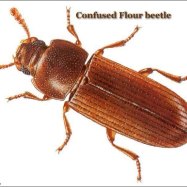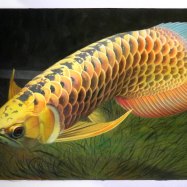
Pomeranian
20-30 cm
Introducing the adorable Pomeranian – a fluffy and lovable household companion known for its compact yet sturdy body shape. This member of the Canidae family stands at a petite 20-30cm and makes a perfect addition to any family. Discover more about this charming breed and why it has become a popular choice among dog lovers worldwide.
Animal Details Summary:
Common Name: Pomeranian
Kingdom: Animalia
Habitat: Domesticated
The Lively and Adorable Pomeranian: A Small Dog with Big Personality
If you are a dog lover, chances are you have heard about the Pomeranian. This small, compact, and fluffy dog has captured the hearts of people around the world with its cuteness and lively personality. But, do you really know all there is to know about this lovable breed? In this article, we will take a closer look at the Pomeranian – its history, characteristics, and why it makes such a popular pet.Origin and History
The Pomeranian, also known as Pom or Pom Pom, is a breed of dog that belongs to the Spitz family Pomeranian. It is a descendant of the sled dogs from the Arctic region and is closely related to other Spitz breeds like the Samoyed, American Eskimo Dog, and the Norwegian Elkhound. However, unlike its larger ancestors, the Pomeranian is a miniaturized version that has been bred specifically for companionship.Originally, the Pomeranian was much larger in size and was used as working dogs in northern Europe. However, it was Queen Victoria of Britain who fell in love with the breed and started promoting the smaller size, thus leading to the development of the modern-day Pomeranian. It was said that Queen Victoria had over 35 Pomeranians, which she exhibited at dog shows. These exhibitions helped popularize the breed, and soon, it gained a reputation as a fashionable and glamorous pet among the European nobility.
Appearance and Characteristics
Pomeranians are a small dog breed with a compact and sturdy body and a long, fluffy coat. The American Kennel Club (AKC) classifies them as a toy breed, and they typically weigh between 1.5 to 3 kilograms, with a body length of 20 to 30 centimeters Pumpkin Patch Tarantula. They have a fox-like face with erect ears, almond-shaped eyes, and a thick double coat that comes in various colors, including orange, red, white, black, cream, and sable.One of the most striking features of a Pomeranian is its thick double coat, which requires regular grooming to prevent tangling and matting. The outer coat is long, straight, and harsh, while the undercoat is soft and dense, providing insulation from the cold weather. Despite their small size, Pomeranians have a confident and fearless personality, making them excellent watchdogs. They are known for their perky and lively nature, which makes them a popular choice for families with children.
Habitat and Distribution
Although Pomeranians have a history of being working dogs, they are now predominantly found in households as companion animals. They make great indoor pets as they are small and can be easily trained to use a litter box. However, it is important to note that Pomeranians still retain their energetic and active nature, so regular exercise and playtime are essential for their overall well-being.Pomeranians can be found all over the world, with a significant population in the United States, Canada, and Europe. They are a popular breed in cities and suburban areas, where they can thrive in smaller living spaces such as apartments and condos.
Feeding and Diet
Being a domesticated breed, Pomeranians have adapted to an omnivorous diet, meaning they can eat both meat and plant-based foods. A balanced and nutritious diet is crucial for their growth and health, and it is recommended to feed them high-quality dry dog food that is specially formulated for small breeds. It is also important to keep an eye on their food intake and avoid overfeeding, as Pomeranians are prone to obesity.Country of Origin and Distribution
As the name suggests, the Pomeranian hails from Pomerania, a region in north-western Germany. However, its popularity quickly spread to other parts of Europe, and by the 19th century, it was a favorite among the royal families in Britain, France, and other European countries. Today, it is a well-loved breed around the world and can be found in almost every country.Popularity and Fun Facts
The Pomeranian is undoubtedly a popular breed, with its charming looks and lively personality. It is ranked in the top 20 of the most popular dog breeds by the AKC, and its popularity continues to grow. But, did you know that this tiny breed was once much larger and was used as a sled dog in the Arctic? It is also the official mascot of the University of Connecticut and has been featured in numerous films and TV shows, including Disney's "Beverly Hills Chihuahua."Another interesting fact about the Pomeranian is that it is a favorite among celebrities, with famous owners like Paris Hilton, Nicole Richie, and Gwen Stefani. These celebrities are often seen carrying their Pomeranians in designer bags, making them a fashion statement as well.
Challenges and Care
While Pomeranians are generally healthy dogs, they are susceptible to some common health issues that are common in small dog breeds. These include dental problems, patellar luxation (dislocation of the kneecap), tracheal collapse, and eye diseases. It is essential to keep up with regular vet visits and maintain good dental hygiene to prevent these issues.As mentioned earlier, the Pomeranian's coat requires regular grooming, including brushing at least three times a week and monthly trimming. They need daily exercise and playtime to stay physically and mentally stimulated. Due to their small size, they may not be suitable for households with small children who may play too roughly with them. Overall, with proper care and attention, a Pomeranian can live a happy and healthy life for 12 to 16 years.
In Conclusion
The Pomeranian may be small in size, but it has a big personality that has captured the hearts of people all over the world. From its working dog origins to a fashionable and loyal companion, this breed has come a long way. Its lively and adorable nature, along with its beautiful appearance, makes it a popular choice among dog lovers. Whether you live in a house or an apartment, the Pomeranian can adapt as long as it receives the love and care it deserves.

Pomeranian
Animal Details Pomeranian - Scientific Name: Canis lupus familiaris
- Category: Animals P
- Scientific Name: Canis lupus familiaris
- Common Name: Pomeranian
- Kingdom: Animalia
- Phylum: Chordata
- Class: Mammalia
- Order: Carnivora
- Family: Canidae
- Habitat: Domesticated
- Feeding Method: Omnivorous
- Geographical Distribution: Worldwide
- Country of Origin: Germany
- Location: Household
- Animal Coloration: Various colors
- Body Shape: Compact and sturdy
- Length: 20-30 cm

Pomeranian
- Adult Size: Small
- Average Lifespan: 12-16 years
- Reproduction: Sexual
- Reproductive Behavior: Seasonal
- Sound or Call: Barking
- Migration Pattern: Non-migratory
- Social Groups: Varies
- Behavior: Friendly and lively
- Threats: None
- Conservation Status: Not endangered
- Impact on Ecosystem: None
- Human Use: Companion
- Distinctive Features: Fluffy double coat
- Interesting Facts: Pomeranians are named after the Pomerania region in Germany
- Predator: None

Canis lupus familiaris
The Fascinating World of Pomeranians: More Than Just a Cute Fluffy Companion
When we think of Pomeranians, what usually comes to mind is a small, fluffy, and adorable dog that is often seen being carried around in a fashionable handbag or trotting alongside their owners. While it is true that they make excellent companions, there is more to these pint-sized pups than meets the eye.Pomeranians, also known as "Poms", are a breed of small dogs that originated from the Pomerania region in Germany. They are a popular breed worldwide, thanks to their charming appearance, friendly nature, and long lifespan of 12 to 16 years PeaceOfAnimals.Com. But what makes them truly unique and fascinating are the distinctive features and behaviors that set them apart from other dog breeds.
Size and Lifespan
Pomeranians are considered a small breed, with an adult size ranging from 7 to 12 inches in height and weighing between 3 to 7 pounds. Despite their tiny size, they have a big heart, and their small stature does not hinder their energy and enthusiasm. They are known for their playful and lively behavior, making them a great choice for families with children.One astonishing fact about Pomeranians is that they have a long lifespan compared to other toy breeds. On average, they can live up to 12 to 16 years, with some even reaching 20 years. This longevity is thanks to their healthy and robust genetic makeup.
Reproduction and Behavior
Like most domesticated animals, Pomeranians reproduce sexually. They are a seasonal breeding species, which means they only mate during certain times of the year Puss Caterpillar. Female Poms usually have their first heat cycle at around six to eight months of age and continue to have them twice a year. Pomeranians, on average, have litters of 1 to 4 puppies.In terms of behavior, Pomeranians are known for their friendly and outgoing nature. They love being around people and are excellent family dogs. Their lively and playful demeanor makes them perfect for an active household. However, they can also be independent and bossy, so early socialization and training are necessary to ensure they grow up to be well-mannered and obedient dogs.
Distinctive Features
One of the most notable features of Pomeranians is their luxurious double coat. They have a thick, fluffy undercoat that provides insulation and a long, straight and coarse outer coat that acts as a protective layer. Their coat comes in a variety of colors, with the most common being orange, red, black, and white.Despite their impressive coat, Pomeranians do not require extensive grooming. Regular brushing to prevent matting and occasional grooming sessions to trim their fur is enough to keep them looking neat and tidy. However, during their shedding season, usually in spring and fall, they will require more frequent brushing. Pomeranians are not known for being heavy shedders, making them a suitable breed for people with allergies.
Human Use
While Pomeranians were initially bred as working dogs, their popularity as a companion quickly rose, especially in Europe. They have since become a beloved breed around the world and are often chosen as a family pet or companion for the elderly due to their small size and gentle nature. They thrive on human companionship and make excellent therapy dogs for the elderly and children.Impact on Ecosystem and Threats
Pomeranians are not considered a threat to the ecosystem as they are non-migratory and are usually kept as domestic pets. They do not have a significant effect on their surroundings and are not known to be destructive. Poms have also not been listed as a vulnerable species or have any major threats facing their population. However, like any other dog breed, they require proper care and attention to lead a healthy and happy life.Interesting Facts
Apart from being a popular breed worldwide, there are some interesting facts about Pomeranians that may surprise you. As mentioned earlier, Pomeranians are named after the Pomerania region in Germany, where they were first bred. They were initially much larger than the Poms we see today, weighing between 20-30 pounds. However, they were bred down to their current size to make them more suitable as household pets.Another fun fact is that Pomeranians have been known to perform in circuses, displaying their impressive tricks and talents. Their high intelligence and eagerness to please make them quick learners, making them a favorite among circus performers.
Pomeranians and Surrounding Environment
It's no secret that Pomeranians thrive on being around people, but what about their surroundings? The truth is, Poms do not have any specific requirements when it comes to their living environment. They can adapt to various living situations, whether it's an apartment in the city or a house in the countryside. As long as they have proper exercise and human companionship, they will be content and happy wherever they are.In terms of climate, Pomeranians are well-suited to most weather conditions, thanks to their thick double coat. However, they do not do well in extreme temperatures, whether hot or cold, and should not be left outside for extended periods.
The Future of Pomeranians
Pomeranians have come a long way from being working dogs to beloved companions worldwide. They have captured the hearts of many with their lovable nature, charming appearance, and long lifespan. And with no major threats to their population, they will continue to bring joy and companionship to many households for years to come.In conclusion, while Pomeranians may be known for their cuteness and fluffiness, there is more to them than meets the eye. They are an interesting breed with unique features and behaviors that make them stand out in the world of dogs. Whether you are looking for a playful family pet or a faithful companion, Pomeranians are sure to steal your heart and make your home a little brighter with their presence.

The Lively and Adorable Pomeranian: A Small Dog with Big Personality
Disclaimer: The content provided is for informational purposes only. We cannot guarantee the accuracy of the information on this page 100%. All information provided here may change without prior notice.












